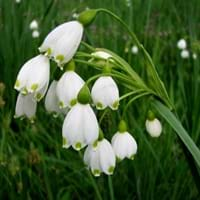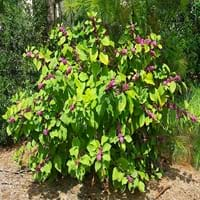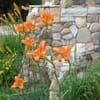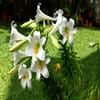Life Span
Perennial
Perennial
Type
Bulb or Corm or Tuber
Shrub
Origin
Europe, Mediterranean, Northern Africa, Western Asia
Southeastern United States, South-Central United States
Types
Not available
Not Available
Habitat
Damp shady woods, Hedgebanks, Mediterranean region
bottomlands, Coastal Regions, Moist woods, pine woods, Slopes, Swamps, Thickets, Woods
USDA Hardiness Zone
Not Available
6-11
AHS Heat Zone
Not Available
12-1
Sunset Zone
21,22
3a, 3b, 4, 5, 6, 7, 8, 9, 14, 15, 16, 17, 18, 19, 20, 21, 22, 23, 24
Habit
Clump-Forming
Arching/Fountain-shaped
Minimum Width
Not Available
Flower Color
White, Light Pink
Pink, Lavender
Flower Color Modifier
Bicolor
Not Available
Fruit Color
Not Available
Purple, White
Leaf Color in Spring
Green
Light Green
Leaf Color in Summer
Light Green
Light Green
Leaf Color in Fall
Several shades of Green
Yellow green, Tan
Leaf Color in Winter
Light Green
Not Available
Leaf Shape
Strap shaped
Elliptic
Plant Season
Spring, Summer, Fall, Winter
Spring, Summer, Fall
Sunlight
Full Sun, Partial Sun, Partial shade
Full Sun, Partial Sun, Partial shade
Growth Rate
Medium
Medium
Type of Soil
Loam, Sand
Clay, Loam, Sand
The pH of Soil
Acidic, Neutral, Alkaline
Acidic, Neutral
Soil Drainage
Well drained
Well drained
Bloom Time
Early Spring, Spring, Late Spring, Early Summer, Late Summer, Winter, Late Winter
Early Summer, Summer, Late Summer
Tolerances
Drought, Light Frost, Variety of soil types
Not Available
Where to Plant?
Ground, Pot
Ground, Pot
How to Plant?
Divison, Seedlings, Seperation
Cuttings, Seedlings
Plant Maintenance
Low
Medium
Watering Requirements
Needs less watering
Medium
In Summer
Lots of watering
Lots of watering
In Spring
Moderate
Moderate
In Winter
Average Water
Average Water
Soil pH
Acidic, Neutral, Alkaline
Acidic, Neutral
Soil Type
Loam, Sand
Clay, Loam, Sand
Soil Drainage Capacity
Well drained
Well drained
Sun Exposure
Full Sun, Partial Sun, Partial shade
Full Sun, Partial Sun, Partial shade
Pruning
Remove damaged leaves, Remove dead branches, Remove dead leaves
No need to prune
Fertilizers
Bulb fertilizer
All-Purpose Liquid Fertilizer, fertilize in spring, Use a fertilizer ratio of 16-4-8
Pests and Diseases
Narcissus Bulb Fly, Slugs
Red blotch
Plant Tolerance
Drought, Light Frost, Variety of soil types
Not Available
Flower Petal Number
Single
Single
Foliage Texture
Fine
Coarse
Foliage Sheen
Matte
Matte
Attracts
Ants, Bees, pollinators
Birds, Butterflies
Allergy
Not Available
Poisonous
Aesthetic Uses
Beautification, Bouquets, Cottage Garden, Ground Cover, Showy Purposes
Showy Purposes
Beauty Benefits
Anti-ageing
Not Available
Environmental Uses
Air purification
Air purification, Food for animals, Food for birds
Medicinal Uses
Alzheimer’s Disease
Colic, Dysentry, Fever, Malaria, Rheumatism, Stomach pain
Part of Plant Used
Flowers, Root
Flowers, Root
Other Uses
Used as Ornamental plant
Showy Purposes, Used as Ornamental plant, Used for bedding in gardens, Used for fragrance, Used for its medicinal properties, Used for Landscaping
Used As Indoor Plant
No
No
Used As Outdoor Plant
Yes
Yes
Garden Design
Alpine, Container, Cutflower, Lawns and Turf, Mixed Border, Rock Garden / Wall, Wildflower
Foundation, Mixed Border, Screening, Wind Break
Botanical Name
Leucojum aestivum
CALLICARPA americana
Common Name
Leucojum, summer snowflake
American beautyberry , French mulberry
In Hindi
Leucojum
American Beautyberry Tree
In German
Leucojum
Amerikanische Schönbaum
In French
Leucojum
Américaine Beautyberry Arbre
In Spanish
Leucojum
Americana beautyberry Árbol
In Greek
Leucojum
American Beautyberry Δέντρο
In Portuguese
Leucojum
Árvore Beautyberry Americana
In Polish
Leucojum
Amerykański pięknotka Drzewo
In Latin
Leucojum
Latin Beautyberry ligno
Phylum
Magnoliophyta
Magnoliophyta
Class
Liliopsida
Magnoliopsida
Family
Liliaceae
Verbenaceae
Genus
Leucojum
Callicarpa
Clade
Angiosperms, Monocots
Angiosperms, Asterids, Eudicots
Tribe
Not Available
Not Available
Subfamily
Amaryllidoideae
Ranunculoideae
Number of Species
Not Available
Importance of Leucojum and American Beautyberry
Want to have the most appropriate plant for your garden? You might want to know the importance of Leucojum and American Beautyberry. Basically, these two plants vary in many aspects. Compare Leucojum and American Beautyberry as they differ in many characteristics such as their life, care, benefits, facts, etc. Every gardener must at least have the slightest clue about the plants he wants to plant in his garden. Compare their benefits, which differ in many ways like facts and uses. The medicinal use of Leucojum is Alzheimer’s Disease whereas of American Beautyberry is Colic, Dysentry, Fever, Malaria, Rheumatism and Stomach pain. Leucojum has beauty benefits as follows: Anti-ageing while American Beautyberry has beauty benefits as follows: Anti-ageing.
Compare Facts of Leucojum vs American Beautyberry
How to choose the best garden plant for your garden depending upon its facts? Here garden plant comparison will help you to solve this query. Compare the facts of Leucojum vs American Beautyberry and know which one to choose. As garden plants have benefits and other uses, allergy is also a major drawback of plants for some people. Allergic reactions of Leucojum are Not Available whereas of American Beautyberry have Poisonous respectively. Having a fruit bearing plant in your garden can be a plus point of your garden. Leucojum has no showy fruits and American Beautyberry has showy fruits. Also Leucojum is not flowering and American Beautyberry is flowering. You can compare Leucojum and American Beautyberry facts and facts of other plants too.





